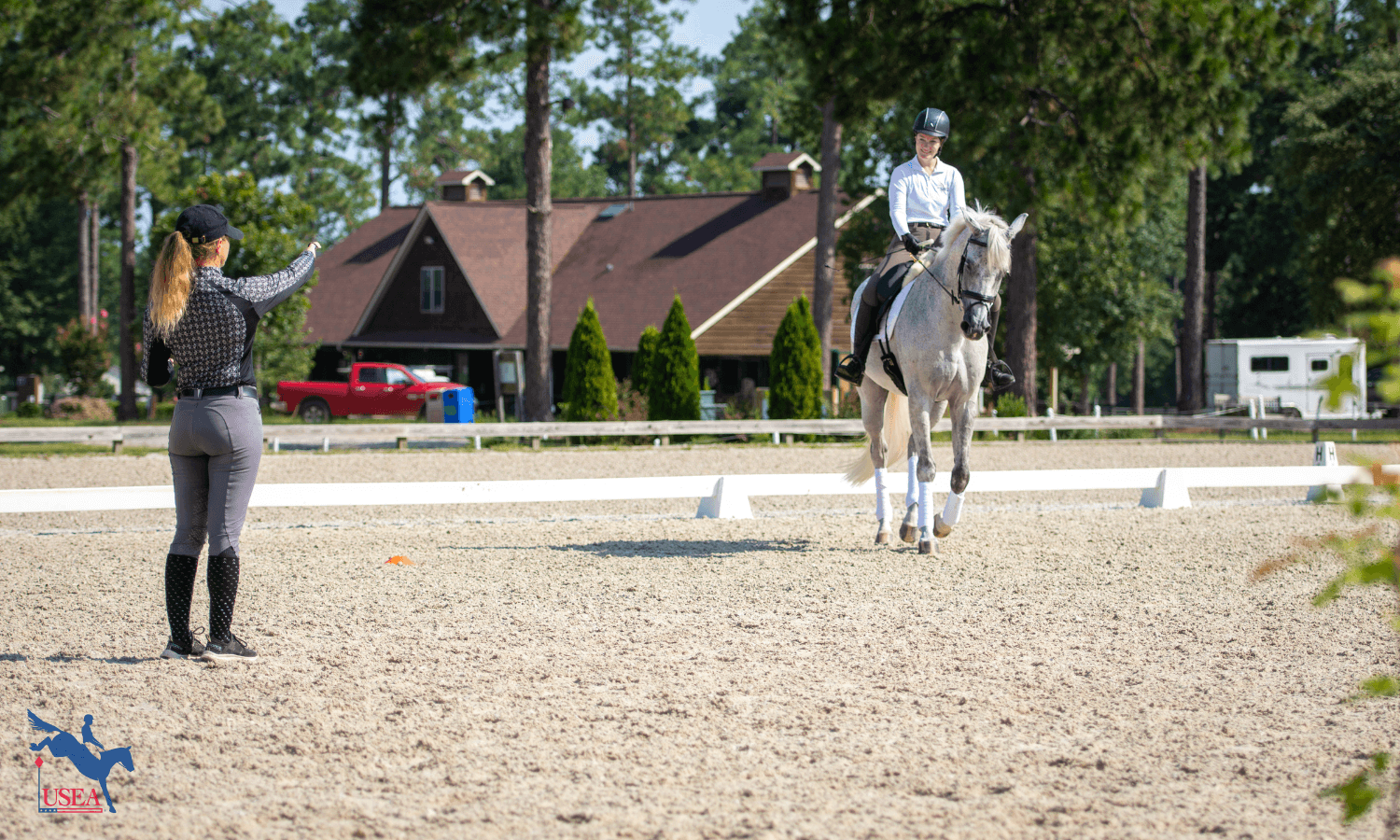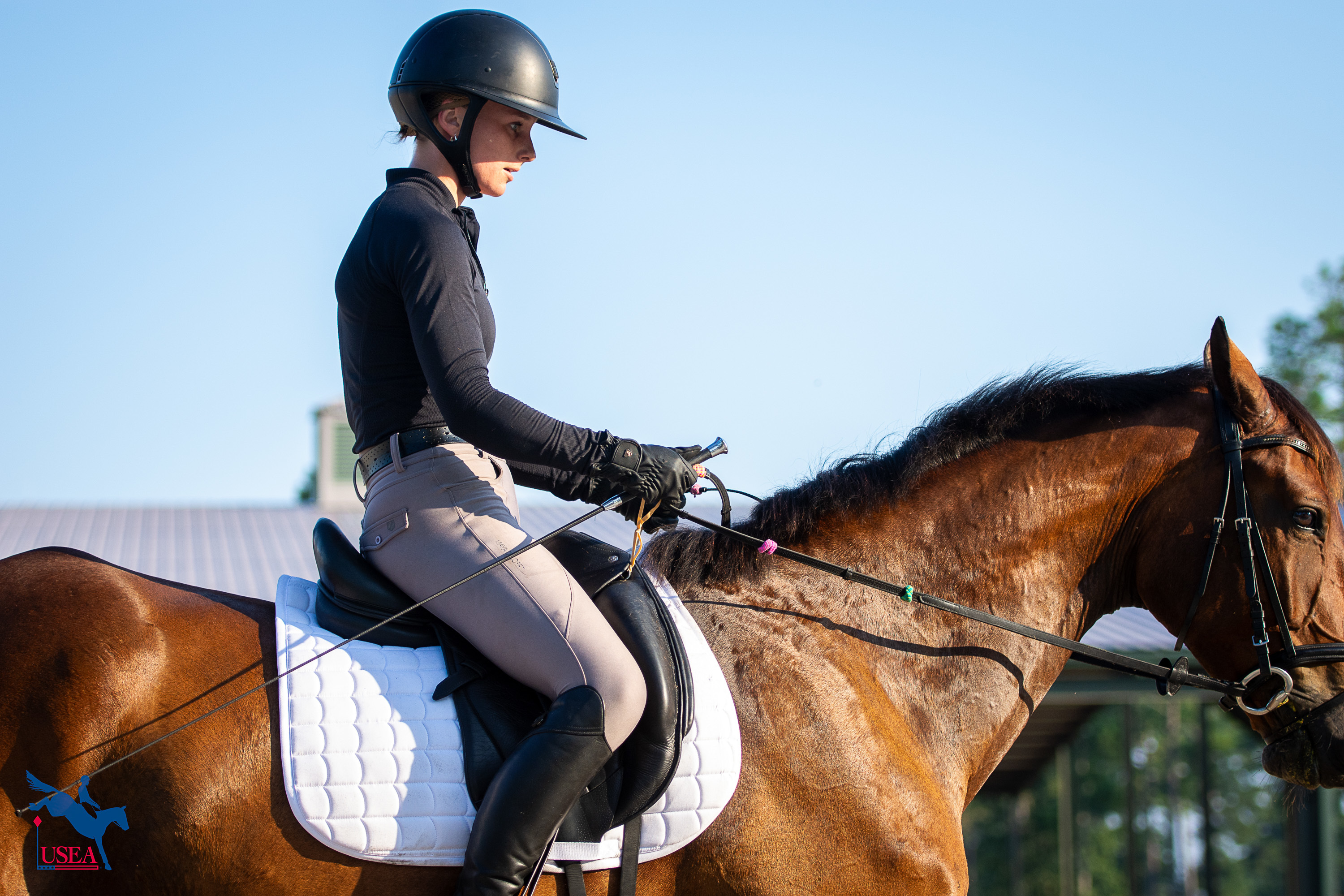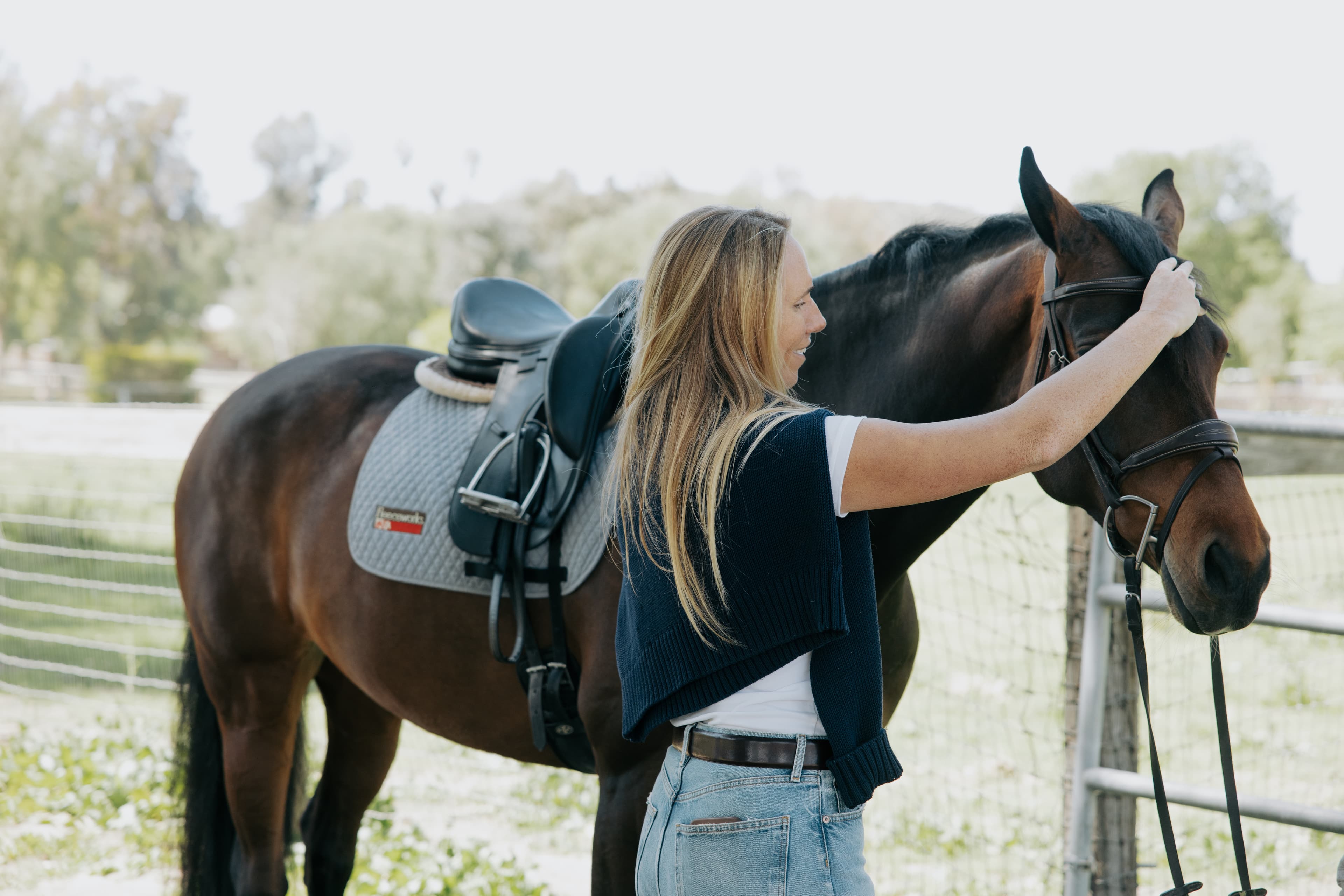EA21 Riders Get Creative on Day 1 of East II Regional Clinic

Emily Beshear encouraged riders to get creative and think outside the box on the flat in the first day of the USEA Emerging Athlete (EA21) East II Clinic. Twelve hand-picked participants worked with Beshear, a USEA Eventing Coaches Program (ECP) coach, at Stable View in Aiken, South Carolina.
The EA21 program was created to carve out a pipeline for potential future team riders, and because of that these dozen eventers were selected based not only on their competition record, but also their willingness to learn, love of the sport, and work ethic. For Beshear’s part, she explained to each group that her goal was not just to give them tips on the flat, but instead to give the participants tools to strengthen their own individual riding and training style in a way that can be applied to a variety of horses.
“This is stuff that may help your horse right now or may not, but you might find it helps the next horse,” she said. “The purpose of these clinics is to help these riders as a whole, not just so they can win the next event.”
Beshear armed riders with an abundance of exercises to encourage meaningful and intentional riding on the flat. Yellow bag in hand to start the morning, she declared the theme of the day, “Dollar Store Training Tools.”
To start, riders got three colorful hair ties twisted around three different spots on their reins as a visual to show short, middle and long rein length. Beshear explained that these markers were not the end-all be-all of where to keep your hands, but rather a visual aid for riders to appreciate their rein length while performing different movements or working through different exercises.
She had all riders start on the middle or longest marker to warm up, with the goal of creating a longer frame overall in the early parts of the ride. “When you start warming up, focus first on a consistent rhythm and relaxation. You’re thinking of a free walk, but you have a good contact, and think right from the beginning about feeling your seat swinging through that walk.”

While each group was tailored to the needs of the individual riders, they all started in this long frame around the arena and worked through simple transitions at the walk, trot, and canter. For some pairs, starting in this frame put them outside their comfort zone, but Beshear helped each pair see the benefits.
“In this longer frame, I’m sure you feel like it’s a little bit all over the place and you’ll like to put It all together, but when we aren’t putting them in as clear of a box from the very beginning, it shows where their weaknesses are — where they fall out or brace against you. We can learn a lot about the kind of ride they will need,” Beshear said.
The second training tool came straight from the office supply section: plain rubber bands. With the help of auditors, Beshear had each rider loop the rubber band through the saddle’s d-ring and held the other end with their pinky finger.
“Elastic bands mean an elastic horse,” Beshear said. “You’re using the rubber band to create the same sensation that you’d have when the horse fills up the contact.”
This tool, Beshear explained, is used to help shift the focus more toward the center of the horse from where flexion truly stems. “We started by thinking of their frame out in front of you, but now I want you to bring it back to the space right in front of you: their shoulders,” she said. “Think of aiming their chest at where you want to go next, and your seat and your body pushes them there. In the suppling work, you want a very clear idea of where the chest is aiming and where the body is lining up.”
Beshear also discouraged participants from trying to produce a show perfect presentation through these exercises, but rather to get creative to better communicate their intentions to their horses.
“Let the hand go a little bit lower and wider — get out of your comfort zone. In the test you want this pretty picture of your riding, but in your training you don’t have to stay so cookie cutter; play around with how you can make what you’re asking of them more obvious. If you are trying to get them to bend and fill out that outer side, open that outside rein while keeping the contact and encourage them to fill that space,” she said.
The final creative training tool was a pair of bright green fly swatters, which were to be held one in each hand so they pointed up. “It’s a very clear visual for you guys as to where your rein aids when you’re doing lateral work,” Beshsear said, and it proved to be for both riders and viewers as parallel swatters showed even hands, while crossed or uneven swatters hinted at an alteration of the rider’s hands.

Each group tested out their fly swatters through a variety of lateral work drills, one of which included leg yielding to the centerline, a trot-walk-trot transition at X followed by a leg yield on the other bend back to the rail. Beshear set up two cones on either side of X to act as bumpers and help riders meet the mark. Losing rhythm and shape was a common pitfall, and to correct this, Beshear said, “Start in the gait where you have the most control. So if you’re losing their shape at the trot, start in walk and ask for a trot transition mid-leg yield. Control the shape, then increase the speed.”
EA21 riders now have many shiny, new tools added to their toolbox, and Beshear promises even more tomorrow as the East II Clinic continues with show jumping at Stable View.
About the USEA Emerging Athlete U21 Program (EA21)
The purpose of the USEA Emerging Athletes U21 Program (EA21) is to identify and provide consistent quality instruction to the next generation of elite event riders. The aim is to create a pipeline for potential team riders by identifying and developing young talent, improving horsemanship and riding skills, and training and improving skills and consistency.
The USEA Emerging Athletes U21 Program was launched in 2022 with a model of five summertime regional clinics taught by selected USEA Eventing Coaches Program (ECP) instructors, leading to a winter national camp consisting of selected Young Riders from the regional clinics. Athletes who are 21 years or younger, are current members of their USEA Young Rider Area program, and are established at the Training Level or higher, are eligible to apply for the EA21 program. Click here to learn more about the USEA EA21 Program.




























